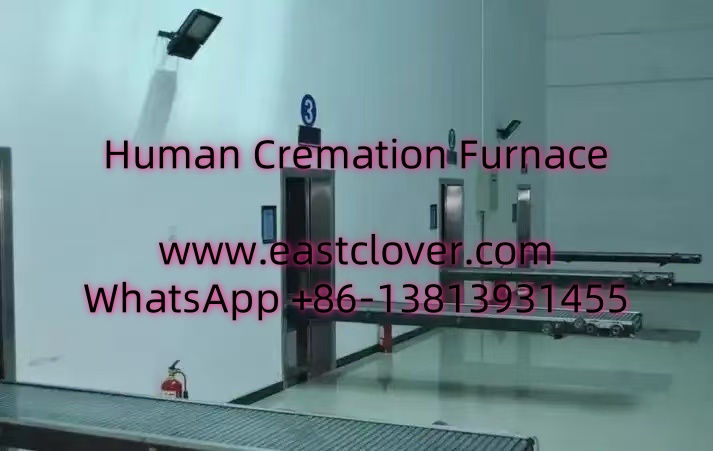Introduction
Traditional cremation has long been a standard method for handling human remains, offering an alternative to burial. However, the process often requires families to transport loved ones to fixed-location crematoriums, which can be logistically challenging, emotionally taxing, and environmentally impactful. Enter the mobile human cremation furnace unit—a groundbreaking innovation that brings cremation services directly to communities, homes, or disaster sites. This news explores the technology behind these units, their societal impact, and how they are transforming end-of-life care.
What is a Mobile Human Cremation Furnace Unit?
A mobile human cremation furnace unit is a self-contained, transportable system designed to perform cremations on-site. These units are typically mounted on trailers or specialized vehicles and include:
- Cremation Chamber: A high-temperature furnace capable of reaching 1,400–1,800°F (760–980°C) to reduce remains to ashes.
- Emission Control Systems: Advanced filters and scrubbers to minimize pollutants like mercury or particulate matter.
- Power Supply: Independent energy sources, such as propane or electricity, for remote operation.
- Safety Features: Automated controls, temperature monitoring, and emergency shutdown mechanisms.
These units comply with environmental and safety regulations, ensuring dignity and efficiency in the cremation process.
The Rise of Mobile Cremation Technology
Mobile cremation technology has gained traction due to several converging factors:
Environmental Concerns
Traditional crematoriums contribute to carbon emissions and energy consumption. Mobile units often incorporate cleaner technologies, such as natural gas or electric heating, and advanced filtration systems to reduce their ecological footprint. Some models even integrate renewable energy sources, aligning with global sustainability goals.
Accessibility and Convenience
In rural or underserved regions, fixed crematoriums may be hours away. Mobile units eliminate the need for long-distance transportation, allowing communities to conduct ceremonies locally. This is especially critical during pandemics or natural disasters, where rapid and dignified handling of remains is essential.
Cultural and Social Shifts
As societies embrace personalized end-of-life services, families seek alternatives to conventional funeral practices. Mobile units enable bespoke ceremonies—whether in a backyard, place of worship, or ancestral land—catering to diverse cultural and religious preferences.
Cost-Effectiveness
Operating a traditional crematorium requires significant infrastructure investment. Mobile units reduce overhead costs, making cremation services more affordable. Families also save on transportation and facility fees, democratizing access to respectful end-of-life care.
Benefits of Mobile Cremation Units
- Reduced Environmental Impact: Lower emissions and energy use compared to fixed facilities.
- Flexibility: Services can be conducted at a time and place meaningful to the family.
- Rapid Response: Vital in crises, such as disease outbreaks or mass casualty events.
- Cultural Sensitivity: Supports rituals requiring on-site cremation, like Hindu antyeshti.
Challenges and Considerations
- Regulatory Compliance: Varying local laws governing emissions, permits, and safety standards.
- Public Perception: Overcoming stigma associated with “mobile” deathcare services.
- Technical Limitations: Smaller units may have reduced capacity or longer processing times.
- Ethical Concerns: Ensuring transparency and dignity throughout the process.
www.southclover.com
Mobile human cremation furnace units represent a significant leap forward in end-of-life services, blending innovation with compassion. By addressing environmental, logistical, and cultural needs, they offer a dignified alternative to traditional methods. As technology advances and societal attitudes evolve, these units are poised to become a cornerstone of modern deathcare, providing accessible and sustainable solutions for generations to come.
FAQs
How does a mobile cremation unit work?
The unit is transported to the desired location, where the remains are placed in the chamber. The furnace operates at high temperatures, reducing the body to ashes, which are then processed and returned to the family.
Are mobile cremations environmentally friendly?
Yes. Many units use cleaner energy sources and advanced filtration to minimize emissions, making them greener than traditional crematoriums.
How much does a mobile cremation service cost?
Costs vary by region and provider but are generally lower due to reduced overhead. Families may save 20–40% compared to fixed facilities.
Are there legal restrictions on mobile cremation?
Regulations differ by jurisdiction. Providers must obtain permits and adhere to local environmental and safety laws.
Can mobile units handle large-scale emergencies?
Yes. Their portability makes them ideal for disaster response, though multiple units may be needed for mass casualties.
Is the process culturally inclusive?
Absolutely. Families can customize ceremonies to align with religious or personal traditions, enhancing the sense of closure.

Comments are closed